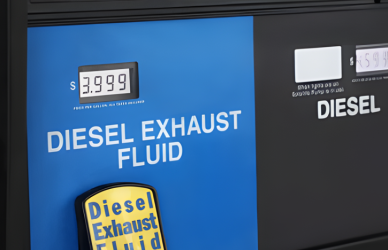The Department of Energy plunged diesel prices by 21.3 cents per gallon in the second-largest decline in the benchmark weekly price. This price drop brings the price per gallon to $4.754.
In the nearly 29-year history of the DOE’s Energy Information Administration publishing a weekly average, only once has a decline of this magnitude occurred. The last time such a steep decline occurred was in October of 2008, when the collapse a month earlier of Lehman Brothers causing an upheaval in global markets kicked off the global financial crisis. In this case, the price fell 21.6 cents for the number posted October 13th of that year.
This week’s price is the lowest since March 7th of this year, with prices peaking on October 24. Since that price peak posted, the DOE/EIA diesel price has fallen 58.4 cents per gallon.
Changes in retail prices inevitably lag, but the lag on the current steep drop has been historic. Despite the recent drop in retail prices, the FUELS.USA data series in SONAR, which measures the spread between the average retail price and the average wholesale price, has continued to rise. Historically, this spread is around $1-$1.10 per gallon. Last week it was at about $1.91 per gallon. This week, it’s sitting at $2.18.
The price of ULSD on the CME commodity exchange fell about $1.20 per gallon between November 3rd and December 9th. On Monday the 12th, however, it climbed 17.21 cents, which is its largest one-day gain since early October.
A combination of declining demand and growing inventories have fueled the recent price drops of ULSD on the CME.
On the backs of decreased demand and refinery operations ramping up to take advantage of strong diesel prices, inventories have recovered in recent months, this having been a key factor in driving prices at the pump above $5.
According to EIA data, this has been helped by blistering U.S. refinery operating rates of just over 95% in the two weeks ending December 2nd.
There are two major factors that helped drive the price up by 17.21 on December 12. First, the Keystone Pipeline, which carries 610,000 barrels per day, is experiencing a significant leak in northeast Kansas. While crude can be rerouted off a pipeline and on to rail cars, that process will take time and a shutdown could affect supplies to refineries.
Another important factor is the weather. Cold weather and cold weather forecasts created a market reaction that was seen in the settlement price of natural gas at the Louisiana Henry Hub delivery point.
It’s unclear how long these trends will continue, or if these key factors will continue to influence the price.










